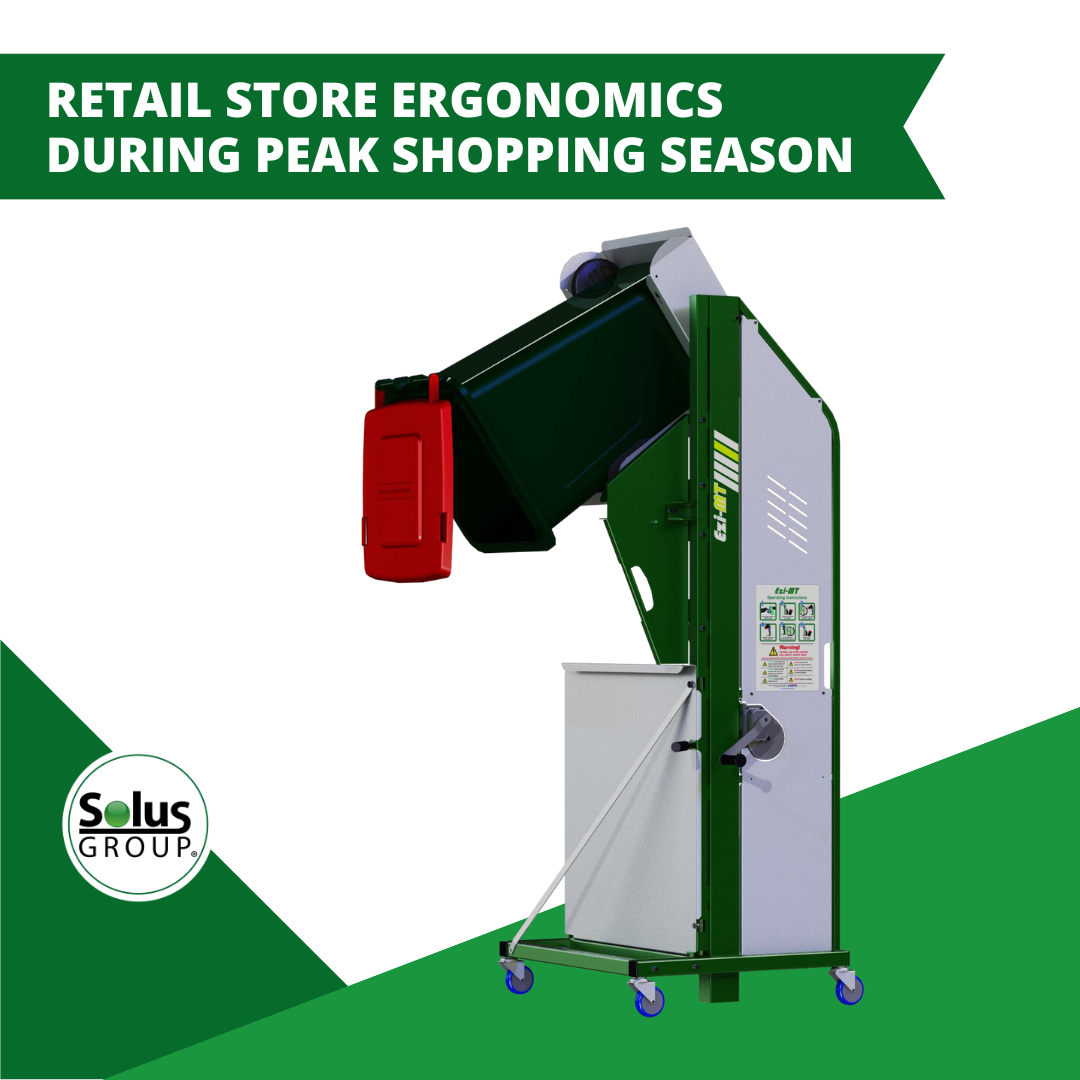We use cookies to make your experience better. To comply with the new e-Privacy directive, we need to ask for your consent to set the cookies. Learn more.
Retail Store Ergonomics During Peak Shopping Season
Shopping season is going to be big this year, and a strong retail store ergonomics plan can help keep staff safe and productive throughout the boom cycle. Deloitte tells us that the average household will spend nearly $1,500 this season, and sales are expected to grow up to 5 percent compared to the previous year.

That adds up to a lot of extra labor on the part of retail store staff. How employees go about completing this work could have a major impact on staffing, productivity, injury rates, and the bottom line itself.
After all, the Ohio Bureau of Workers’ Compensation attributes 30 percent of workplace injuries to ergonomic failures. Here are a few ways retail store managers can insure that their employees won’t fall victim to the common hazards associated with a busy shopping season.
Tips for Retail Store Ergonomics Success
When the retail scene gets busy, there’s more of everything for the staff; more opening boxes, more stocking shelves, more carrying cartons, more emptying the trash, more hours standing at the check-out desk. Repetition exacerbates ergonomic hazards, and can even take a relatively safe motion and turn it into a musculoskeletal disorder waiting to happen.
Retail managers should remind all staff — including temporary workers hired for the holiday rush — to fit work to their bodies as much as possible, and not the other way around. Here are a few examples that can create a safer, more productive holiday season for brick-and-mortar retailers everywhere:
- Think before you lift. That old chestnut about lifting “with your legs, not with your back” is entirely true. Bend your knees for a lift and keep the carton close to your body. Better yet, perform a two-person lift or, best of all, use material handling equipment like a Lift Table to elevate cartons, and slide them onto a cart to move them around the facility.
- Keep work in a comfortable position relative to your body. Typically, that means close to your belly, as close as possible, between your waist and shoulders. Self-leveling Mobile Lift Tables allow you to set the level of your work and maintain it, even if you add or remove another layer of items.
- Avoid motions that require twisting, lifting, reaching, and awkward postures. Emptying very full trash cans is a perfect example of an ergonomically dangerous task. It requires staff to lift a heavy object, hold it with extended arms, and twist their torsos all at once. Consider using a low-cost, low-footprint EZI-MT Manual Bin Dumper at the dumpster. This crank-operated trash can dumper removes the ergonomic risk from emptying heavy bins.
While these tips are just the beginning of a robust ergonomics program, they go a long way toward removing the sorts of tasks that lead to painful, costly musculoskeletal disorders among staff. And while they’re a good idea year-round, during the peak shopping season, they’re indispensable — and a great cornerstone for a more involved retail store ergonomics program.
References:
“2019 Deloitte holiday retail survey.” Deloitte. Deloitte Touche Tohmatsu Limited, 2019. Web. 29 Oct. 2019.
“Ergonomics resource guides by industry.” BWC.Ohio. Ohio Bureau of Workers’ Compensation, n.d. Web. 29 Oct. 2019.
